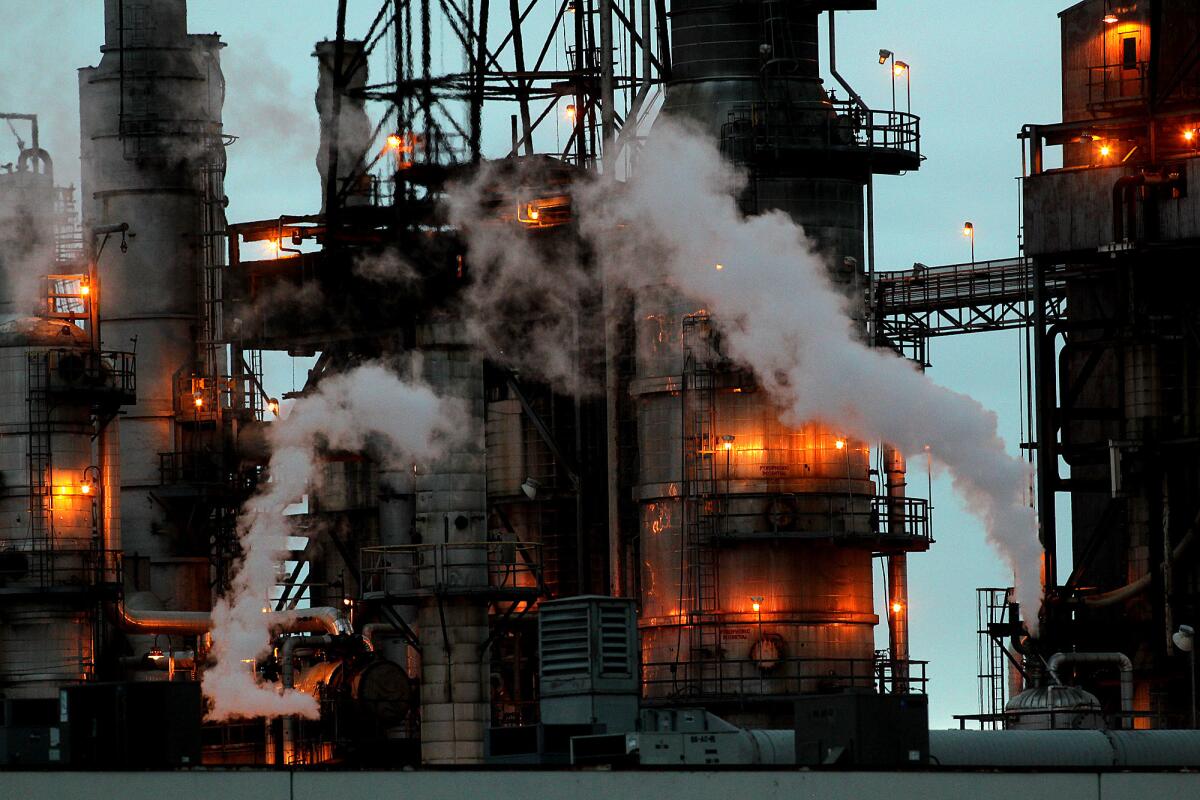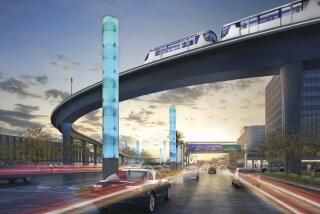Gov. Jerry Brown wants polluters’ fees to help fund high-speed rail

SACRAMENTO — Gov. Jerry Brown wants long-term funding for California’s high-speed rail project to come from the state greenhouse gas reduction program, expanding his commitment to the $68-billion project despite an ongoing legal battle.
His plan would annually shift a third of all “cap-and-trade” revenue, generated through fees on polluters, to help build the first leg of the rail line, which is supposed to stretch from Merced to the San Fernando Valley by 2022.
The proposal could provide billions of dollars for the bullet train over the next several years, although administration officials have not released specific estimates
“We believe it will be a growing source of revenue,” said H.D. Palmer, spokesman for Brown’s Department of Finance.
Brown hinted at his plans in January, when he proposed spending $250 million in cap-and-trade money on the rail project in the fiscal year that begins July 1. His latest proposal would guarantee more money for the project each year until the first leg is completed.
In addition, as the state repays $500 million it borrowed from the cap-and-trade fund over the next few years, $400 million would be made available for high-speed rail.
Voter-approved bonds for the bullet train have been held up by Sacramento County Superior Court Judge Michael Kenny, who said the state had failed to provide an adequate funding plan to start construction. An appeals court is considering the Brown administration’s request to overturn the rulings.
Environmentalists and legislative analysts have questioned the wisdom of using the funds, saying cap-and-trade money should be committed to more immediate, tangible projects to cut greenhouse gas emissions.
“The best use of the cap-and-trade funds is to invest them in projects that are out there now” — such as improving energy efficiency — “that can get us near-term emission reductions,” said Sierra Club California Director Kathryn Phillips.
Legislative analysts and some lawmakers have questioned the legality of using the money for the train, which won’t help the state meet its goal of cutting emissions to 1990 levels by 2020.
“We have concerns about the administration making this legally questionable move a permanent component of the high-speed rail budget,” said Sabrina Lockhart, a spokeswoman for Assembly Republicans.
Administration officials say building the bullet train is a valid use of cap-and-trade funding because the project will help reduce emissions in the long run.
Senate leader Darrell Steinberg (D-Sacramento) has said he’s open to Brown’s proposal “if it’s part of a credible funding plan” for completing the project.
The rail project has long been dogged by doubts over its funding. California voters approved a $9-billion bond measure for it in 2008, and the Obama administration provided an additional $3.2 billion in grants.
But the combined $12.2 billion would cover only a small fraction of the system’s projected $68-billion construction cost.
If the state ultimately sells the bonds and lawmakers approve use of the cap-and-trade revenue, the project will still need significant new federal grants and investments by the private sector.
In Washington, House Republicans have vowed to stop future funding and are attempting to claw back past grants, asserting that the state has violated the terms of the federal contributions.
And the state has not begun to solicit private investors, saying that it has to start operating a partial system before they would have enough confidence to write checks.
Officials dismiss all of these risks as normal parts of an ambitious major infrastructure project, and they have vowed to stay the course.
The state hopes to start construction of a 29-mile segment through Fresno by July, putting the project about a year and half behind a schedule announced in 2012.
More to Read
Sign up for Essential California
The most important California stories and recommendations in your inbox every morning.
You may occasionally receive promotional content from the Los Angeles Times.












